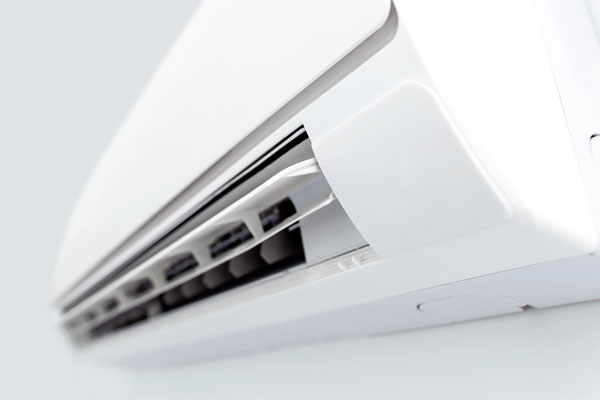Choosing the most efficient air conditioning system can be a daunting task for homeowners due to the wide variety of options available. From traditional systems to window units to newer options like ductless mini split system, you have many options and parameters to consider. This article focuses on two prominent options—the mini split AC and the conventional central air conditioning systems. How can one determine which is the best fit for their home? We explore how they work and the advantages of the mini split or ductless air conditioner, and draw comparisons with traditional AC systems. This information should help you make a knowledgeable choice, aiming at increased home comfort, energy efficiency, and possible reduction in energy bills.
The Functionality Behind Mini Split AC Systems
A ductless mini split air conditioning system, as its name suggests, operates independently from conventional ductwork. This system has two main parts: an external condenser/compressor, and one or several interior air-handling units. The essential connections like the power cable, refrigerant tubing, suction tubing, and condensate drain conduit, are contained within a conduit linking these units, ensuring a simplified installation process.
The notable advantage of this setup is that it negates the need for extensive ductwork, which can be particularly advantageous in buildings where implementing ductwork poses difficulties, or when additions to homes cannot integrate seamlessly with the existing ductwork. The individual indoor units afford homeowners the flexibility of cooling or heating particular areas or rooms, making the system adaptable to a variety of residential layouts.
By eliminating the traditional duct framework, the ductless mini split system addresses a prevalent inefficiency in forced-air systems – energy loss during air transportation through ducts often situated in non-conditioned spaces. This removal leads to enhanced energy efficiency. The ability of this system to provide focused heating and cooling amplifies its usefulness as a modern, adaptable solution for efficient and customizable residential climate management.
Reasons to Consider a Mini Split System
Ductless air conditioning systems provide exceptional adaptability, attending to each family member’s unique comfort requirements. These systems permit specific zones to independently heat or cool, leading to precise temperature control throughout your house. The result is improved personal comfort and overall contentment. The zoning function not only enhances the quality of life by customizing the living environment, but also encourages substantial energy conservation by preventing unnecessary heating or cooling of vacant spaces.
One of the distinctive merits of ductless systems is their minimalistic and flexible layout. Indoor units are elegantly designed and can be subtly fixed onto walls, ceilings or integrated into dropped ceilings. Such installations ensure that they meld effortlessly with a room’s décor. This is in stark contrast to window units which can be obtrusive and visually unappealing, therefore, ductless systems provide a solution that balances visual attractiveness with functional efficiency.
In addition, ductless air conditioning systems function exceptionally silently. Unlike the high noise levels often generated by conventional and window AC units, ductless systems maintain a tranquil indoor environment. The outdoor compressor, the chief source of noise, is located outside the dwelling, thus preserving the indoor peace. The reduced noise level is notably advantageous in bedrooms, home offices, or any space where minimal disturbance is vital for relaxation and focus.
Energy Efficiency and Lower Energy Bills
A key advantage of choosing a mini-split AC system lies in its exceptional energy efficiency. This efficiency results largely from the advanced inverter technology in these units, which curtails energy use. Traditional systems often work in an all-or-nothing way, while mini-split units adapt compressor speeds to the home’s instantaneous heating or cooling demands. This capacity guarantees a stable and agreeable indoor environment, while also diminishing energy usage significantly.
Ductless design additionally enhances the system’s efficiency. Traditional systems often experience substantial energy loss due to duct inefficiencies, like leaks and unregulated spaces. Mini-split units, being ductless, eradicate these complications, offering a more direct and potent method of controlling home temperature. This can lead to considerable reductions in energy costs.
The zoning capacity inherent to ductless systems facilitates energy use only where and when necessary. This selective methodology curbs the inefficiency of heating or cooling vacant rooms, a typical issue with centralized systems. The exactness and control rendered by mini-split units improve comfort while reducing surplus energy use.
The aforementioned energy-saving traits render ductless mini-split systems an ecologically sound choice, aligning with current sustainability objectives while satisfying homeowners’ needs for reduced operating costs. This seamless blending of advanced technology, ductless design, and zoned climate regulation positions mini-split AC systems as a frontrunner for those seeking energy efficiency and lowered energy costs in their home climate control approach.
How Mini Split Systems Compare With Traditional AC and Window Units
Comparing mini split systems with traditional AC systems and window units, a few significant contrasts emerge, primarily relating to installation, efficiency, and their overall effect on a home. Despite the seemingly high initial cost of mini split systems, they tend to justify this expenditure through their considerable energy savings and dual-purpose (heating and cooling) functionality. These systems could even replace an additional heating system in areas experiencing milder winters.
Distinctly less obtrusive than bulky window units, mini splits don’t require a window for installation, hence preserving both the aesthetics and security of your home. In terms of energy efficiency, mini splits stand out, delivering considerable energy conservation due to their advanced inverter technology and lack of ductwork-related energy losses— a common issue in conventional systems.
As for air circulation and temperature balance, mini splits offer a more steady and adjustable solution across various zones in a house, without the draftiness that accompanies window units. This enables personalized comfort levels, a welcome departure from the generic approach of central air systems and the limited scope of window ACs.
Notably, mini splits generate significantly less noise compared to traditional and window units. With their outdoor compressor, which produces most of the operational noise, positioned outside the house, indoor noise is drastically reduced. This contributes to a calmer, more comfortable home atmosphere.
Calling In the HVAC Pros for Installation and Maintenance
A certified HVAC technician’s expertise is essential for your ductless mini split system to operate at its best, both during the installation process and routine maintenance. Installation done by a professional is critical not only for optimal performance, but also for preventing potential dangers like electrical issues or leaks of refrigerant. These technicians have in-depth knowledge of the specific requirements of mini split systems, such as appropriate location for indoor and outdoor units, maintaining efficient air circulation, and setting up secure connections between the components. Such careful methodology helps comply with strict building regulations and manufacturing specifications, disregarding which might negatively impact the system’s effectiveness and your safety.
Scheduled maintenance by an expert is just as significant in prolonging your mini split AC’s durability. With time, even the strongest systems can experience wear and tear, causing efficiency to drop or unexpected malfunctions. An annual evaluation by a professional HVAC technician can foresee these problems, facilitating timely substitution of worn-out parts, filters’ cleaning, and identifying any leakages or blockages. Taking these steps ahead of time ensures your mini split system remains as efficient as the day it was installed, while also protecting your investment from potential expensive repairs in the future. Engaging a professional from Best Home Services for installation and consistent maintenance is the core of a reliable, efficient, and secure heating and cooling solution for your home.
The Final Verdict: Is a Mini Split System Right for Your Home?
Choosing the perfect air conditioning system involves various considerations such as your home’s design, your comfort preferences, and your budget. Mini split systems excel in situations where energy efficiency, targeted temperature control, and versatility are key priorities. They are an excellent solution for houses without ductwork, compact areas, or extensions where traditional ducted systems are impractical. Although the initial cost of mini split systems can be higher than other choices, the tailored comfort and energy efficiency they provide may yield substantial savings on utility bills over time.
Consider also the design benefits and functional attributes of mini split systems. Their modern, subtle design and noiseless operation can enrich your living space without disrupting your interior style or peace. Their ability to offer both heating and cooling within a single system adds convenience and further cost benefits, particularly in regions with milder weather conditions.
As you navigate this decision, the expertise of the HVAC professionals from Best Home Services is invaluable. They can provide an in-depth assessment of your unique needs, ensuring that your final choice, whether a mini split or a different AC system, is the perfect fit for your home. It’s essential to remember that an air conditioning system’s effectiveness is not solely reliant on its model, but also on professional installation and ongoing maintenance, reinforcing the necessity of professional guidance from the beginning.

